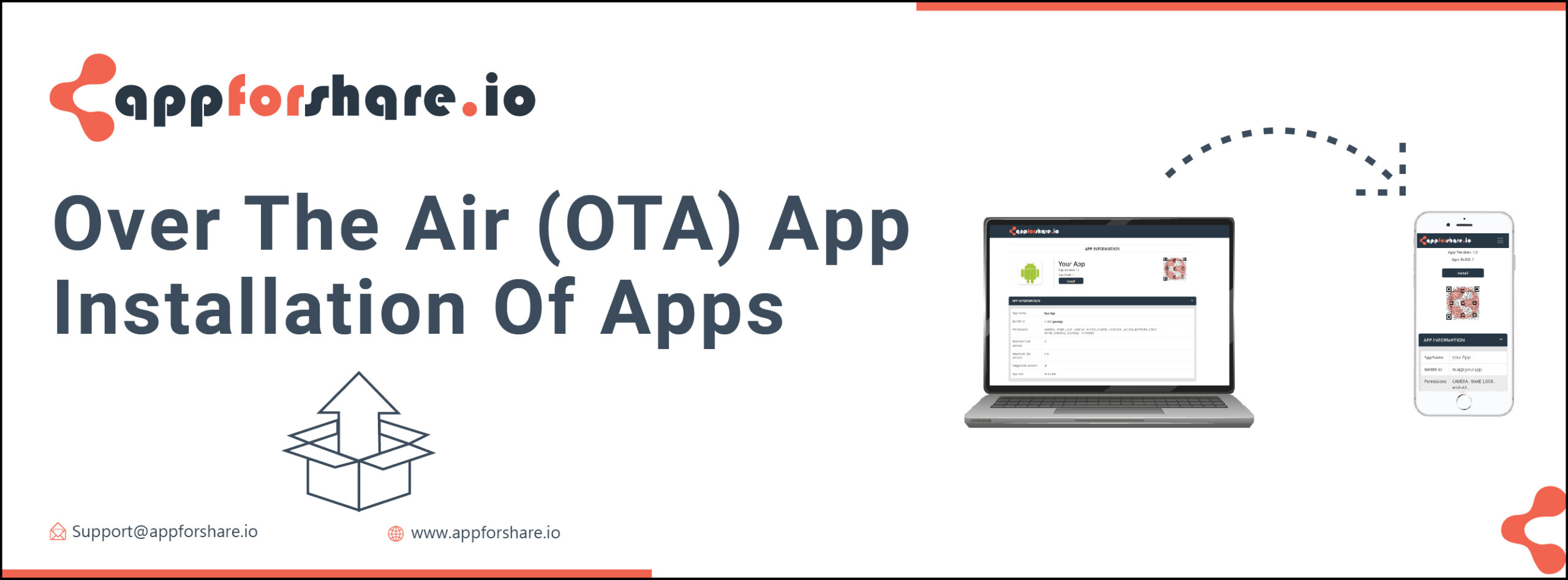Data has become essential in the digital age. Most, if not all that we do on digital platforms, have some form of data to it. For example, we use data on social media platforms, websites, and services as software. It’s also the backbone of every app and program that we use today. We now create and distribute over 1.145 trillion MB per day, and that number will only keep rising with time.
Ensuring that these apps run effectively is what most programmers and service providers for tech-based solutions focus on. But one step that should have equal importance is how these apps get delivered to the end-user. One of the leading ways developers get apps to people is via digital transfers called over-the-air or OTA app installation. So what does this mean, and how does it work?
What is Over The Air?
OTA is a way of sending files such as app downloads, operating systems, and corresponding updates to users anywhere without physically connecting a storage unit to their devices. If you’ve ever installed a program by downloading it online, then you’ve experienced a form of over-the-air installation.
Programmers use OTA signals to program, update, configure, and provision devices with data and software that they can use. An excellent way to think of this is how OTA activation allows an entity or individual to wirelessly activate devices by typing a code or following a set of steps. Many of today’s mobile providers now use this as a way to transmit firmware and OS updates to their users without having to call people to a physical location or going to them house-to-house.
Once upon a time, most installations happened by creating physical storage in disks and CDs then distributing them to software users. However, it seems that this practice is slowly phasing out as companies look towards OTA installations as the new mode of software and data distribution.
How OTA App Installation Works
It’s estimated that there will be over 6 billion smartphones by the end of 2021. Imagine what a large operation OTA might be if it sends over regular firmware updates, bug fixes, and new operating systems to these devices every year. How does that work?
Let’s look at one of the biggest OTA operations to date— OS updates. When Android OS or Apple OS gets an update, the developers upload the firmware into a secured server that all users can access. The team then proceeds to inform all the users via a blast that a new version of their software is available. Users download the update and then follow a few steps to install it into their system.
In the case of apps, some developers might also send an OTA (over-the-air) link. Their clients can then tap on the link and follow the instructions to get the latest version of the application.
How to Setup OTA App Installation
According to Statista, there are now over 3.4 million apps on the Android store and 2.2 million on the Apple store. Some app providers might also set up an independent app installation mechanism via an over-the-air link app, especially for laptops and desktop apps. How can a program set up this OTA app installation? We can follow a simple step
- Upload — The first step is to upload the app builds into a service that will host all the files for people to access anytime from anywhere. It’s best to look for a service with file restrictions to allow for as much space as necessary to send everything needed. It’s best to work with a third-party service to provide this service such as App For Share.
- Confirm — The app development team will then have to wait for confirmation that the builds are now available for sharing and download. This update often comes via email.
- Secure — Files should be protected as malicious bots or individuals could seek to corrupt or steal any information pertinent to the app’s integrity and copyright.
- Share — Once ready and secure, the app OTA hosting service will create a unique OTA link app that app developers can share with clients and users. Next, build out a website where people can download the app or updates from.
- Update — The challenge often comes in sending out updates. Still, developers can now automate firmware and app update notifications through an OTA link for auto forward to help save time and energy.
Do I Need to Hire a Developer to Setup OTA?
Should a Saas or app provider company hire a developer to set up an OTA? Of course, it helps to have someone with a computer programming degree online take care of this process, but there are also various services online that are very straightforward to use. Developers can take care of the process, but anyone can learn how to set up OTA for an app or update release anytime.





